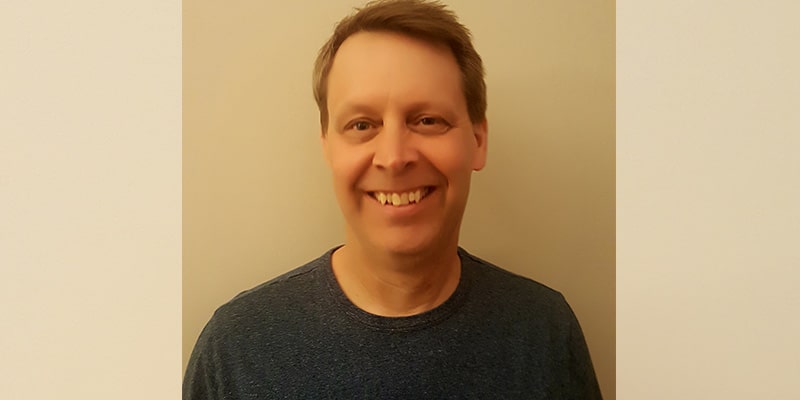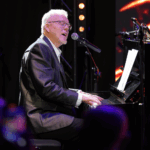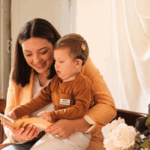MED-EL
Published May 10, 2018
I Chose To Do Something About My Atresia: BONEBRIDGE

Hi! My name is Ross, I am 55 years old and live in Saskatoon, Canada. I am married and have four sons. I work for the federal government of Canada where I conduct research on insects associated with agricultural ecosystems. I am an active person and do various sports. I love to spend time with my family and I also play the guitar.
“I had to address my reduced hearing ability by changing my physical behavior.”
At birth I was diagnosed with microtia and atresia on my right ear. My parents initially inquired about correcting the hearing loss. However they were told that, due to potential complications, surgery was not a viable option. During my youth and teenage years I was more concerned about microtia because of the look of it, rather the hearing loss it caused. My left side hearing is excellent and I was lucky that my hearing loss on my right side did not affect my speech development.
I began to notice my hearing loss when I started university. This was particularly noticeable in meetings, group projects, and while teaching labs, when I had a difficult time hearing conversations. I had to address my reduced hearing ability by changing my physical behavior. For example I would try to position myself so that people I was speaking with were on my left side where I had good hearing.
I did not actively pursue potential hearing solutions until I was in my late 20’s. The first technology that I investigated was the CROS system, which wirelessly transmits sound from the bad ear to the good ear. Though the CROS significantly improved hearing in my right ear, I found that this resulted in ‘noise’ occurring in my left ear. Overall, I found that I was somewhat disoriented with this system as I was not hearing out of both ears. I decided that this solution did not meet my needs.
In 2007 my ENT specialist suggested that I try the BAHA hearing system, which I tried out on a headband for one month. The improvement in hearing on my right side was fantastic, while maintaining integrity of hearing on my left side. Unfortunately I had significant concerns about getting a permanent BAHA abutment, related to care and infections. I then decided that the BAHA was also not a viable option for me.
“I spent 25 years researching available technologies to determine which system best met my needs.”
As I work as a researcher, I tend to be conservative in my decision process, and make decisions based on evaluation of all available data. In this case I spent 25 years researching available technologies to determine which system best met my needs. Though the process was lengthy, I felt it was important to choose a system that improved my hearing and my quality of life. In 2014, I met with my otologist and audiologist to discuss the BONEBRIDGE. At the time, this was a new system that had only recently been approved in Canada. They determined that I was an excellent candidate for it. Though I was excited about the BONEBRIDGE technology, I needed more time to investigate this system.
I spoke with a patient who was one of the first people in Canada to get a BONEBRIDGE. She said that though there was pain and swelling after the surgery, the recovery was relatively quick. After a second appointment with my otologist, I decided to proceed with the surgery. On November 24, 2015 I went to Royal University Hospital for the surgery. The surgery was done in the morning and I returned home in the afternoon. Though there was some discomfort, I did not really experience any pain. The following day my wife removed the dressing and she was somewhat uncomfortable with the swelling and discoloration. One might say that she experienced more discomfort than me!
“I was finally hearing on both sides—this was an amazing auditory experience!”
The recovery went very well and I was anxious to have the activation. The four week wait was difficult. The day of my activation was a cold day and I walked across snow-covered sidewalks to meet with my audiologist. I clearly recall hearing the sound of my left footstep, “crunch…crunch…crunch”. After being activated, I left the hospital and was astounded to hear both my left and right footsteps, “Crunch, crunch, crunch, crunch, crunch!” I was finally hearing on both sides—this was an amazing auditory experience!
“The amazing thing is that I am continually experiencing new ways of hearing!”
I benefit from the BONEBRIDGE in many situations, for example in conversations, in restaurants, or while driving. The BONEBRIDGE also helps me to know where the sound comes from, which was not really possible before. One thing that I really like is the stereo sound—I have never heard stereo sound, my world was always in mono. Now, sound has depth!
Over the past two years my right side hearing has evolved. Initially, I noticed improvement in hearing ‘simple’ sounds, like conversation. As time passed, I noticed that my hearing improved in the areas that are more complex, for example stereo sound, reduced ‘noise’, and sound location. My brain had to develop the ability to ‘filter’ sounds, recognizing what sounds are important, and what is just noise. Detection of locating where sound is coming from is something that I recently developed. The amazing thing is that I am continually experiencing new ways of hearing!
“I thought that I had excellent hearing in one ear and that was good enough. After surgery/activation I realized how wrong I was.”
It appears that many people, including patients, surgeons, audiologists and insurance companies, feel that hearing in one ear is sufficient. I initially felt this way—this was one reason why it took me so long to settle on the BONEBRIDGE. I thought that I had excellent hearing in one ear and that was good enough. After surgery/activation I realized how wrong I was. Hearing on both sides has resulted in a significant change in my life. I would like to stress that, due to technology such as the BONEBRIDGE, it is not a privilege to have hearing on both the right and left side. Patients, surgeons, audiologists, and insurance companies must realize that in many cases, single-sided hearing is not sufficient. We should permit all suitable candidates to have binaural hearing.
The BONEBRIDGE system has been a life changer for me. My life has improved in ways that I never imagined. Sometimes I hear a new sound and I am so happily amazed how much my hearing has improved.
Thanks, Ross! Find out more about the BONEBRIDGE hearing implant and who could benefit from it.
MED-EL
Was this article helpful?
Thanks for your feedback.
Sign up for newsletter below for more.
Thanks for your feedback.
Please leave your message below.
Thanks for your message. We will reply as soon as possible.
Send us a message
Field is required
John Doe
Field is required
name@mail.com
Field is required
What do you think?
MED-EL


